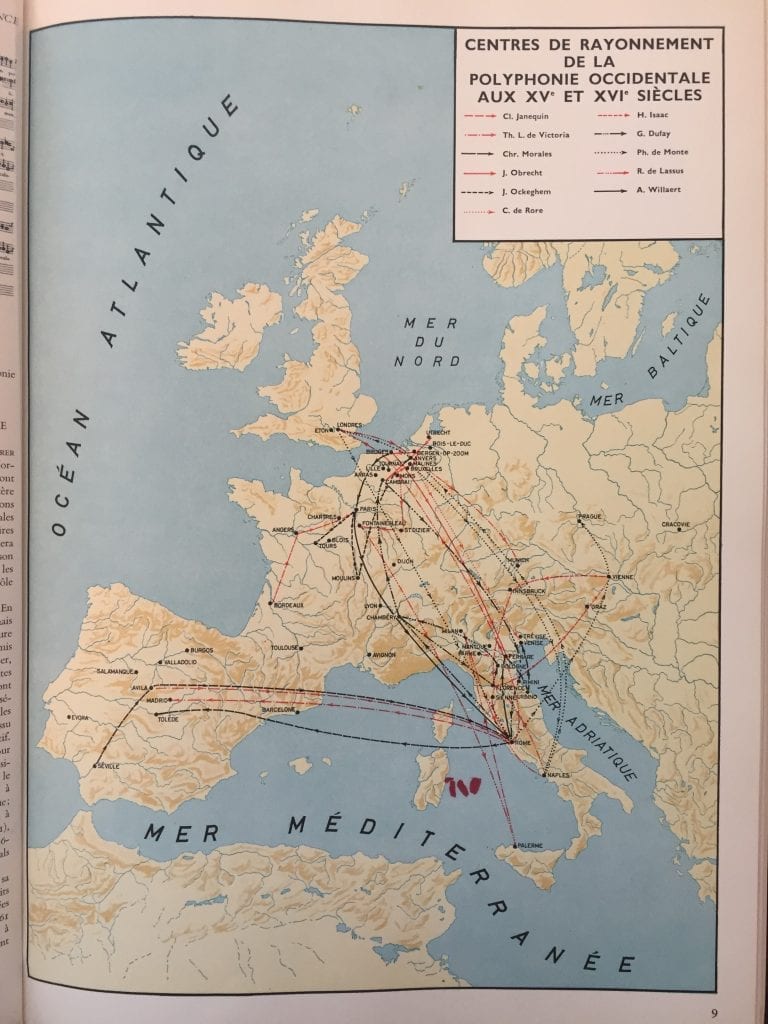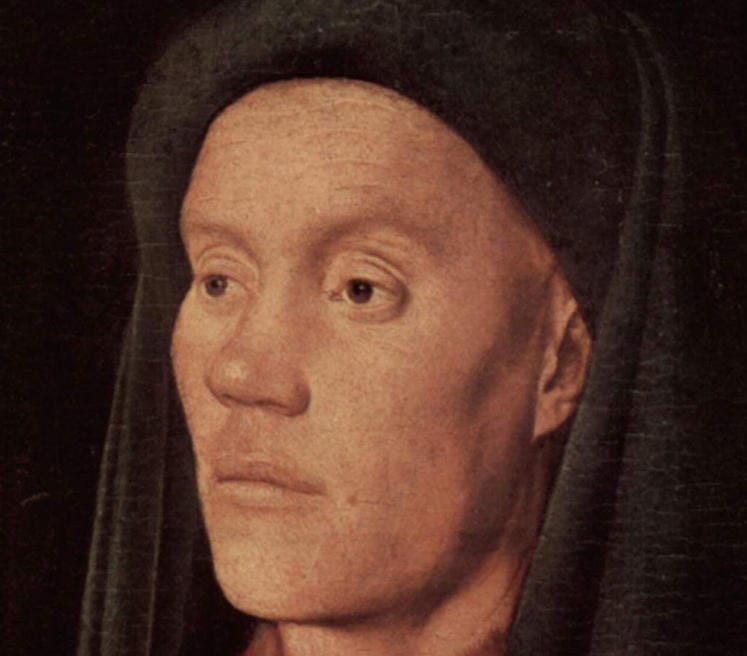An introduction to the travels of major polyphonic composers in Western Europe during the late medieval and early Renaissance periods

This original map is from the Atlas Historique de la Musique, titled Centers of the Influence of Western Polyphony in the 15th and 16th Centuries. It details the travels of eleven major polyphonic composers from this period.
At the beginning of our January 2019 interim research course, we (William and Jacob) were tasked with improving a map from the Atlas Historique de la Musique. This initial map, pictured above, does an okay job of showing where important clusters of musical activity were during the 15th and 16th centuries. That being said, there were some obvious improvements that we chose to make when we moved this map to a digital platform. The original Atlas map is messy. Eleven composers all living and traveling in the same corner of the world makes for a lot of intersecting lines as composers move from city to major city. The act of digitizing the map allows us to use a separate layer for each composer. This means we can fit much more information in the map, such as descriptions of what each composer did in each location, dates of residence, video, and images. We also have the option of toggling each composer on or off so we can isolate one composer’s travels at a time.
The original map conflates two separate ideas: people and places. The title suggests that the map will show locations (centers) where major polyphonic music was being made, but the map itself shows people and their travels throughout their lives. Digital mapping allows us to see both sides of the musical world during this time period. By putting a description with each point in our map, we can see where major polyphonic works were being composed, for whom these composers were working, and whatever else the composers might have been doing in each location. With this work, we can more easily see that the centers of polyphonic music during this time were not so much a fixed set of locations, but they moved along with the composers who were creating polyphonic music. The composers that we used in our map congregate around certain areas in Italy, Belgium, and France, but it is the composers themselves that makes the place an important musical center more than just the location itself.
Our current map is an improvement on the physical one, but there is still always work that can be done to make it more complete. We only chose 7 composers from these two centuries, and although they are important, there are many more that could be added to the map. The Grove Encyclopedia was the main source that we used for this map, and while it was very useful, it is hardly comprehensive. There are more major composers, significant works, and other important life events that could potentially be added to fill out this map. For now, the map exists as a good introductory source for the reader to get a broad view of what some composers were doing and where they were doing it during the 15th and 16th centuries. Hopefully, more work can be done in the future to expand on this preliminary research as we continue to try and improve upon the physical maps of the past.

You must be logged in to post a comment.